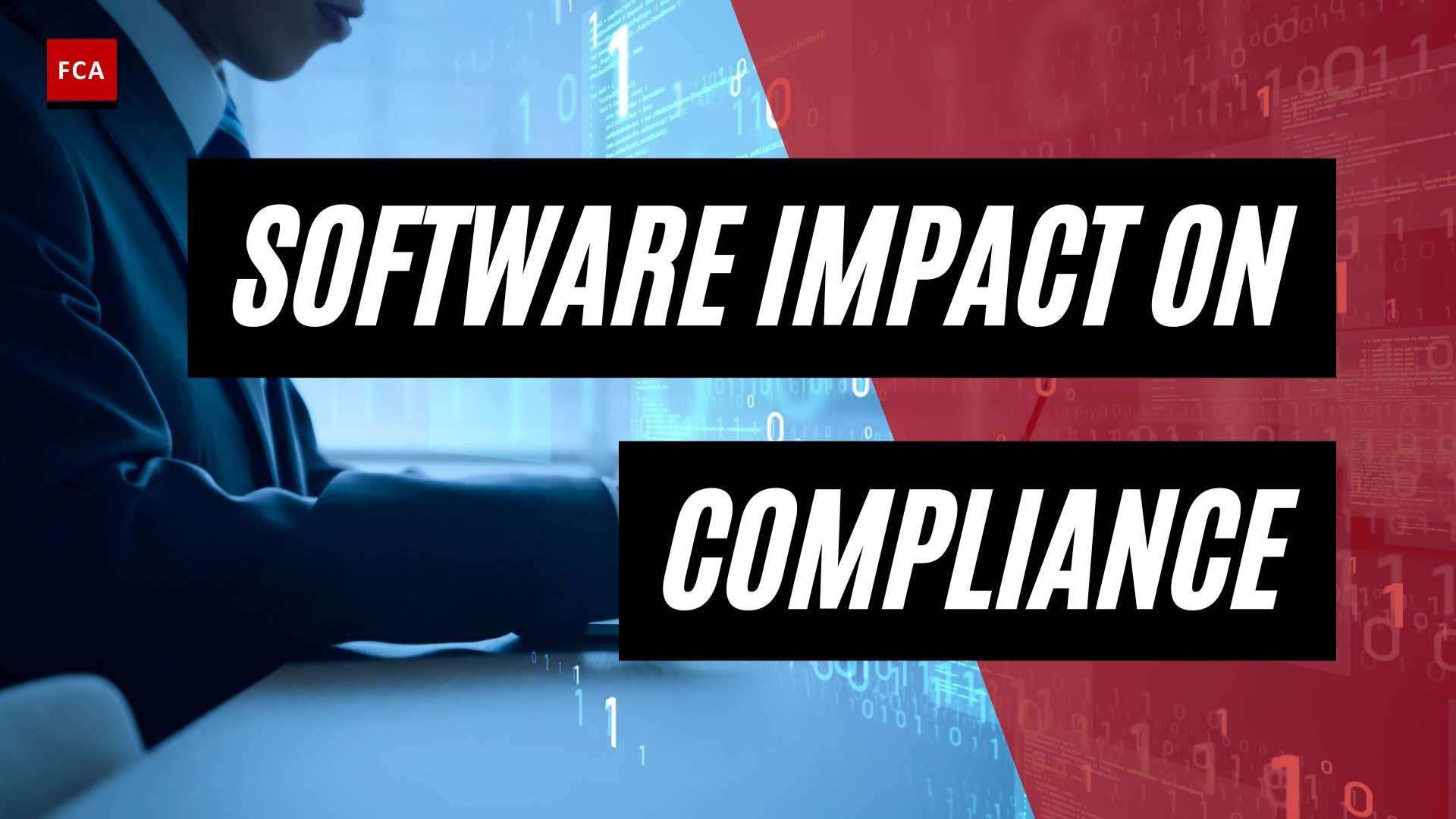AML Compliance Framework Overview
To effectively combat money laundering and illicit financial activities, organizations must implement robust Anti-Money Laundering (AML) compliance programs. These programs serve as a framework to identify, prevent, and mitigate the risks associated with money laundering. Understanding the components and importance of AML compliance is crucial for professionals working in compliance, risk management, anti-money laundering, and anti-financial crime.
Comprender los programas de cumplimiento de AML
An AML compliance program is a set of policies and procedures that establish the infrastructure for an organization’s compliance operations. It helps identify and combat money laundering by implementing various measures and controls. A comprehensive AML compliance program involves multiple stakeholders and departments within an organization, including legal, compliance, risk management, and operations.
Importancia del cumplimiento de AML
The importance of AML compliance cannot be overstated. Failure to meet AML compliance requirements can lead to significant fines and penalties for organizations. For example, Capital One faced a $390 million fine for Bank Secrecy Act (BSA) violations (Unit21). Compliance with AML regulations not only helps protect organizations from legal and financial risks but also safeguards the integrity of the financial system as a whole.
Componentes clave de un programa de cumplimiento de AML
An effective AML compliance program consists of several key components that work together to ensure compliance with relevant regulations and detect potential money laundering activities. Estos componentes incluyen:
-
Compliance Officer: Every AML program should have a designated compliance officer responsible for overseeing and managing the program’s implementation and effectiveness.
-
Internal Controls and Procedures: Internal controls and procedures are essential to establish a system of checks and balances within an organization. They help ensure compliance with AML regulations and detect any suspicious activities.
-
Training Program: A comprehensive AML training program for staff is crucial to equip employees with the knowledge and skills necessary to identify and report suspicious transactions. Regular training sessions and updates are essential to keep employees up to date with evolving trends and regulations.
-
Independent Audits and Reviews: Independent audits and reviews play a vital role in assessing the effectiveness of an organization’s AML compliance program. These audits help identify any gaps or weaknesses and provide recommendations for improvement.
-
Customer Due Diligence (CDD): Customer due diligence involves conducting thorough checks on customers to verify their identities, assess their risk profiles, and ensure compliance with AML regulations. CDD procedures are essential for detecting and preventing money laundering activities.
By implementing these key components, organizations can establish a strong AML compliance program that helps mitigate the risks associated with money laundering and protect against potential legal and reputational damage.
As the regulatory landscape continues to evolve, organizations must stay informed about international AML standards, such as the Financial Action Task Force (FATF) recommendations and other relevant guidelines. To learn more about international AML standards, please refer to our section on International AML Standards.
Normas internacionales contra el blanqueo de capitales
To combat the global issue of money laundering effectively, international organizations have established standards and guidelines for Anti-Money Laundering (AML) compliance. These standards provide a framework for countries to develop their AML laws, regulations, and programs. The two most prominent entities in setting international AML standards are the Financial Action Task Force (FATF) and other international organizations.
Overview of International AML Standards
The Financial Action Task Force (FATF), an international organization, plays a central role in setting global standards for combating money laundering and terrorist financing. Their recommendations provide a comprehensive framework for countries to implement effective AML measures, including customer due diligence, record-keeping, reporting of suspicious transactions, and international cooperation. FATF’s recommendations are recognized as the international standard for AML and are followed by over 200 countries and jurisdictions (Unit21). Compliance with these recommendations is essential for countries to maintain their reputation in the global financial system and facilitate international cooperation in combating financial crime (Financial Crime Academy).
In addition to the FATF, other international organizations also contribute to the development of international AML standards. These organizations include the European Union, the United Nations, and the World Bank. For instance, the European Union issues AML directives, such as the Fourth and Fifth Anti-Money Laundering Directives, which provide additional requirements and guidelines for member states to strengthen their AML frameworks (Unit21). The United Nations Office on Drugs and Crime (UNODC) offers guidance and technical assistance to countries in developing and implementing effective AML measures, aligning with international standards. Furthermore, the World Bank supports countries in strengthening their AML frameworks through capacity-building programs, knowledge sharing, and financial assistance.
Recomendaciones del Grupo de Acción Financiera Internacional (GAFI)
The FATF sets forth a comprehensive set of recommendations that cover various aspects of AML compliance. These recommendations include measures to prevent money laundering and combat the financing of terrorism. Some key areas covered by the FATF recommendations include:
-
Customer Due Diligence (CDD): The FATF recommends that financial institutions and designated non-financial businesses and professions (DNFBPs) conduct thorough customer due diligence to verify the identities of their customers and assess the risks associated with their business relationships.
-
Record-Keeping: Financial institutions and DNFBPs are advised to maintain adequate records of customer transactions and other relevant information to facilitate effective AML investigations and audits.
-
Reporting of Suspicious Transactions: The FATF encourages reporting entities to establish systems for detecting and reporting suspicious transactions to the appropriate authorities, such as financial intelligence units (FIUs).
-
International Cooperation: The FATF emphasizes the importance of international cooperation in combating money laundering and terrorist financing. It encourages countries to collaborate by sharing information, providing legal assistance, and enhancing coordination among law enforcement agencies.
Other International AML Standards
Apart from the FATF, other international organizations contribute to the development and promotion of AML standards. The European Union issues directives that provide additional requirements and guidelines for member states to strengthen their AML frameworks. These directives complement the FATF recommendations and help create a standardized approach to AML across European countries.
The United Nations Office on Drugs and Crime (UNODC) provides guidance and technical assistance to countries, assisting them in developing and implementing effective AML measures consistent with international standards. The World Bank supports countries in strengthening their AML frameworks through capacity-building programs, knowledge sharing, and financial assistance.
By adhering to international AML standards, countries can establish a robust AML framework and contribute to the global fight against money laundering and terrorist financing. These standards ensure a level playing field globally, safeguarding the integrity of the financial system and promoting international cooperation in combating financial crime.
Capacitación en cumplimiento de AML
To effectively combat money laundering and protect businesses from financial crimes, comprehensive AML compliance training is of utmost importance. AML training equips individuals and organizations with the knowledge and skills necessary to understand the significance of preventing money laundering, safeguarding their businesses, and contributing to the overall economy.
Importance of AML Compliance Training
AML compliance training is crucial for professionals working in compliance, risk management, anti-money laundering, and anti-financial crime roles. It helps them understand the legal and regulatory obligations surrounding money laundering prevention, enabling them to identify and report suspicious activities effectively.
By receiving proper training, individuals gain the ability to recognize red flags and indicators of money laundering, which helps maintain the integrity of the financial system. AML compliance training also emphasizes the importance of adhering to anti-money laundering laws and regulations, thereby mitigating the risk of financial penalties, reputational damage, and legal consequences.
Tailoring AML Training Programs
Effective AML compliance training programs should be tailored to the specific roles and responsibilities within an organization. A one-size-fits-all approach is insufficient when dealing with the complexities of anti-money laundering.
By customizing training programs, organizations can ensure that employees receive targeted education on the aspects most relevant to their roles. For example, while frontline staff may require training on customer due diligence (CDD) and transaction monitoring, senior management may need a deeper understanding of risk assessments and regulatory compliance.
Topics Covered in AML Training
AML training programs cover a wide range of topics to provide comprehensive education on anti-money laundering practices and regulations. Some key areas typically covered in AML compliance training include:
- Anti-money laundering laws and regulations: An overview of the legal framework governing money laundering prevention, including local and international regulations.
- Suspicious activity reporting: Guidance on recognizing and reporting suspicious transactions or activities to the appropriate authorities.
- Customer due diligence (CDD): Understanding the importance of conducting thorough background checks on customers, verifying their identities, and assessing the risks associated with their transactions.
- Red flags of money laundering activities: Identification of common indicators and patterns that may indicate potential money laundering activities.
- Transaction monitoring: Techniques and best practices for monitoring financial transactions to identify unusual or suspicious behavior.
- Risk assessments: Assessing the risks associated with money laundering and implementing appropriate controls to mitigate those risks.
- Regulatory obligations and compliance requirements: Awareness of specific obligations imposed by regulatory bodies and the consequences of non-compliance.
By covering these topics and more, AML compliance training equips professionals with the knowledge and skills needed to effectively contribute to the prevention of money laundering and the enforcement of AML regulations.
Stay tuned for the next section, where we will explore best practices for AML compliance training, including scenario-based training, ongoing training and updates, and building a strong compliance culture.
Best Practices for AML Compliance Training
To ensure the effectiveness of AML compliance programs, it is crucial to implement best practices for AML compliance training. By adopting these practices, organizations can equip their employees with the necessary knowledge and skills to effectively combat money laundering and financial crime.
Scenario-Based Training
Scenario-based training is a highly effective approach for AML compliance training. This method provides employees with practical examples and real-world situations, allowing them to enhance their understanding of how to identify and report suspicious activities effectively. By engaging in interactive scenarios, employees can develop their decision-making skills and learn to apply AML compliance policies and procedures in different contexts.
Through scenario-based training, employees can gain hands-on experience in recognizing red flags, conducting customer due diligence, and responding to potential money laundering risks. This approach not only enhances their knowledge but also helps them develop the critical thinking skills necessary for effective AML compliance.
Ongoing Training and Updates
AML compliance training should not be a one-time event. To keep up with the ever-evolving regulatory requirements and best practices in the field, organizations should provide ongoing training and regular updates to their employees. This ensures that employees stay current with the latest developments and maintain a high level of AML compliance expertise.
Regular training updates can be delivered through various channels, including workshops, webinars, newsletters, and online modules. By offering continuous learning opportunities, organizations foster a culture of continuous improvement and demonstrate their commitment to staying ahead of emerging money laundering threats.
Building a Strong Compliance Culture
A strong compliance culture is essential for effective AML compliance. Organizations should emphasize the importance of a compliance culture within the organization, encouraging employees to be vigilant, proactive, and committed to fighting financial crime effectively. This can be achieved by promoting open communication channels, fostering a sense of responsibility, and providing incentives for compliance.
Leadership plays a crucial role in building a strong compliance culture. By setting a positive example and actively participating in AML compliance initiatives, leaders can inspire employees to prioritize compliance efforts. Additionally, organizations should establish clear policies and procedures, conduct regular audits, and provide adequate resources to support a culture of compliance.
By implementing scenario-based training, providing ongoing training and updates, and building a strong compliance culture, organizations can empower their employees to become effective guardians against money laundering and financial crime. A comprehensive AML compliance training program should cover a wide range of topics, including customer due diligence, transaction monitoring, risk assessments, red flags, and suspicious activity reporting. With these best practices in place, organizations can work towards a safer and more secure financial environment, ensuring compliance with regulatory requirements and protecting their reputation and integrity.
Challenges and Risks in AML Compliance
Achieving and maintaining effective Anti-Money Laundering (AML) compliance requires a thorough understanding of the challenges and risks involved. In this section, we will explore some common causes of AML compliance failures, the importance of Know Your Customer (KYC) processes, and the need to address false positives in transaction monitoring.
Common Causes of AML Compliance Failures
One of the reasons behind AML compliance failures is the lack of proper training and awareness among employees. When employees are not equipped with the necessary knowledge to identify suspicious transactions, it becomes difficult to effectively mitigate money laundering risks. Therefore, providing comprehensive AML compliance training is crucial to ensure that employees understand their roles and responsibilities in detecting and reporting potential money laundering activities. AML compliance training should cover topics such as recognizing red flags, understanding regulatory requirements, and implementing effective AML controls (LinkedIn).
Importance of KYC Processes
A robust KYC process is an essential component of any effective AML compliance program. KYC refers to the procedures and controls that financial institutions and other regulated entities implement to verify the identity of their customers. Inadequate KYC processes within financial institutions create opportunities for criminals to launder money easily. By implementing a well-established KYC process, organizations can identify and verify the identity of their customers, assess the potential risks associated with their activities, and monitor their transactions effectively. This helps in preventing money laundering activities and maintaining AML compliance.
Addressing False Positives in Transaction Monitoring
Transaction monitoring systems play a crucial role in detecting suspicious activities that may indicate potential money laundering. However, these systems often generate a significant number of false positives, which are alerts triggered for transactions that are not actually indicative of illicit activity. The presence of false positives poses challenges for organizations, as it can lead to wasted resources, increased operational costs, and inefficiencies in AML compliance efforts. Addressing false positives requires the use of advanced transaction monitoring software that can effectively reduce the number of false alarms while maintaining high accuracy in detecting actual suspicious transactions. Implementing such software helps organizations focus their resources on investigating genuine suspicious activities and ensures a more efficient AML compliance process (LinkedIn).
By understanding and addressing the challenges and risks associated with AML compliance, organizations can strengthen their AML compliance programs and mitigate the risk of money laundering. Implementing comprehensive AML compliance training, establishing robust KYC processes, and utilizing advanced transaction monitoring software are all essential steps in ensuring effective AML compliance. It is important for organizations to stay updated on the latest regulatory requirements and industry best practices to maintain a strong and proactive approach to AML compliance.
AML Compliance Training Resources
To ensure that professionals working in compliance, risk management, anti-money laundering, and anti-financial crime have the necessary knowledge and skills, various AML compliance training resources are available. These resources provide comprehensive training programs and certifications to enhance expertise in anti-money laundering practices.
LIMRA AML Training Program
The LIMRA AML Training Program offers a comprehensive solution for producers in financial services companies. The program allows producers to complete core training once, with the documentation sent to every participating carrier they represent. This saves time and effort while ensuring compliance across multiple carriers.
The LIMRA AML Training Program offers a range of courses, including refresher courses. For example, the 2024 AML refresher course focuses on recognizing compromised identities and data, developing customer protection measures, identifying high-risk activities and money laundering red flags, recognizing suspicious activities, and understanding Suspicious Activity Reports (SAR). The training emphasizes compliance with anti-money laundering regulations and rules (LIMRA).
Additionally, the LIMRA AML Program provides learners with a 24/7 AML Resource Library to access content as needed. It also offers a customized company page to help carriers satisfy regulatory requirements. The courses are available in both English and Spanish, and the pricing is scaled by volume. For detailed pricing information, one can contact [email protected].
ICA Certificates and Diplomas
The International Compliance Association (ICA) offers a range of certificates and diplomas designed to develop expertise in AML compliance. These certifications cater to professionals at different role levels, providing comprehensive training on various aspects of anti-money laundering practices (International Compliance Association).
-
ICA Certificates: These certificates are suitable for individuals at the New Entrant/Operations level. They provide a foundation for professionals entering the field, helping them understand the core areas of business in AML compliance training.
-
ICA Specialist Certificates: Designed for Analysts/Officers, these certificates enhance knowledge in niche risk areas of anti-money laundering. They enable professionals to develop specialized expertise in specific aspects of AML compliance.
-
ICA Diplomas: Suitable for Officer/Manager role levels, these diplomas focus on managing, developing, and implementing best practice initiatives in AML compliance. Hacen hincapié en la necesidad de una formación integral para abordar eficazmente los complejos desafíos en este ámbito.
Requisitos reglamentarios para la capacitación en materia de lucha contra el blanqueo de capitales
Los organismos reguladores, como la Autoridad Reguladora de la Industria Financiera (FINRA, por sus siglas en inglés), exigen capacitación en cumplimiento de AML para los empleados de las instituciones financieras. De acuerdo con las reglas y regulaciones de FINRA, la capacitación sobre el cumplimiento de AML debe realizarse anualmente, como mínimo.
Para cumplir con los requisitos reglamentarios, las empresas deben mantener registros completos de las actividades de capacitación AML, incluido el contenido, los participantes, las fechas, los puntajes y la asistencia. La formación continua es esencial para mantener a los empleados actualizados sobre las últimas tendencias, actualizaciones y cambios normativos del sector (Great Chatwell Academy).
Al utilizar recursos como el Programa de Capacitación AML de LIMRA, los certificados y diplomas de ICA, y cumplir con los requisitos reglamentarios, los profesionales pueden mejorar su comprensión del cumplimiento de AML y desarrollar las habilidades necesarias para combatir el lavado de dinero y los delitos financieros de manera efectiva.
Consequences of AML Non-Compliance
Ensuring compliance with Anti-Money Laundering (AML) regulations is of utmost importance for organizations. El incumplimiento de los requisitos de cumplimiento de AML puede tener graves consecuencias. En esta sección, exploraremos las posibles sanciones y multas, el impacto del incumplimiento en la reputación y la confianza, así como las vulnerabilidades en la industria de servicios financieros.
Posibles sanciones y multas
El incumplimiento de la lucha contra el blanqueo de capitales puede dar lugar a importantes multas y sanciones para las organizaciones. Los organismos reguladores tienen la autoridad para imponer multas sustanciales para disuadir el comportamiento no conforme y salvaguardar la integridad del sistema financiero. Por ejemplo, Capital One fue multada con 390 millones de dólares por violaciones de la Ley de Secreto Bancario (BSA) (Unit21). En otro ejemplo, el Deutsche Bank fue multado con 258 millones de dólares por violaciones de la lucha contra el blanqueo de capitales por parte de los reguladores de Nueva York (CPA Canadá). Estas sanciones pueden alcanzar cientos de millones de dólares, lo que causa una importante presión financiera en las organizaciones.
Reputational Damage and Loss of Trust
Las consecuencias del incumplimiento de la lucha contra el blanqueo de capitales van más allá de las sanciones económicas. El daño a la reputación y la pérdida de confianza pueden tener efectos duraderos y de gran alcance. La confianza de los clientes, inversores y partes interesadas es crucial para el éxito y la sostenibilidad de cualquier organización. Las noticias de incumplimiento pueden empañar la reputación de una organización, lo que lleva a la pérdida de oportunidades comerciales y a la erosión de la confianza de los clientes. Reconstruir la confianza puede ser un proceso desafiante y lento, lo que hace que el impacto del daño a la reputación sea potencialmente más dañino que las sanciones financieras en sí mismas (CPA Canadá).
Vulnerabilidades en el sector de los servicios financieros
El sector de los servicios financieros es especialmente vulnerable al incumplimiento de la normativa contra el blanqueo de capitales debido a la naturaleza de sus operaciones. La industria maneja un gran volumen de transacciones, lo que la hace atractiva para los lavadores de dinero que buscan ocultar fondos ilícitos. La complejidad de los sistemas financieros y la amplia gama de productos y servicios que se ofrecen crean oportunidades de explotación. Las organizaciones dentro de la industria de servicios financieros deben permanecer vigilantes y proactivas en la implementación de programas sólidos de cumplimiento AML para mitigar estas vulnerabilidades y proteger la integridad de sus operaciones.
Para evitar estas posibles consecuencias, las organizaciones deben priorizar el cumplimiento de AML e invertir en programas de capacitación integrales, software de cumplimiento de AML y otras soluciones de cumplimiento de AML. Al hacerlo, las organizaciones pueden mitigar los riesgos, proteger su reputación y contribuir a la integridad general del sistema financiero. Es esencial mantenerse actualizado con las últimas regulaciones de cumplimiento de AML y realizar auditorías periódicas de cumplimiento de AML para garantizar el cumplimiento continuo de los requisitos de AML.








